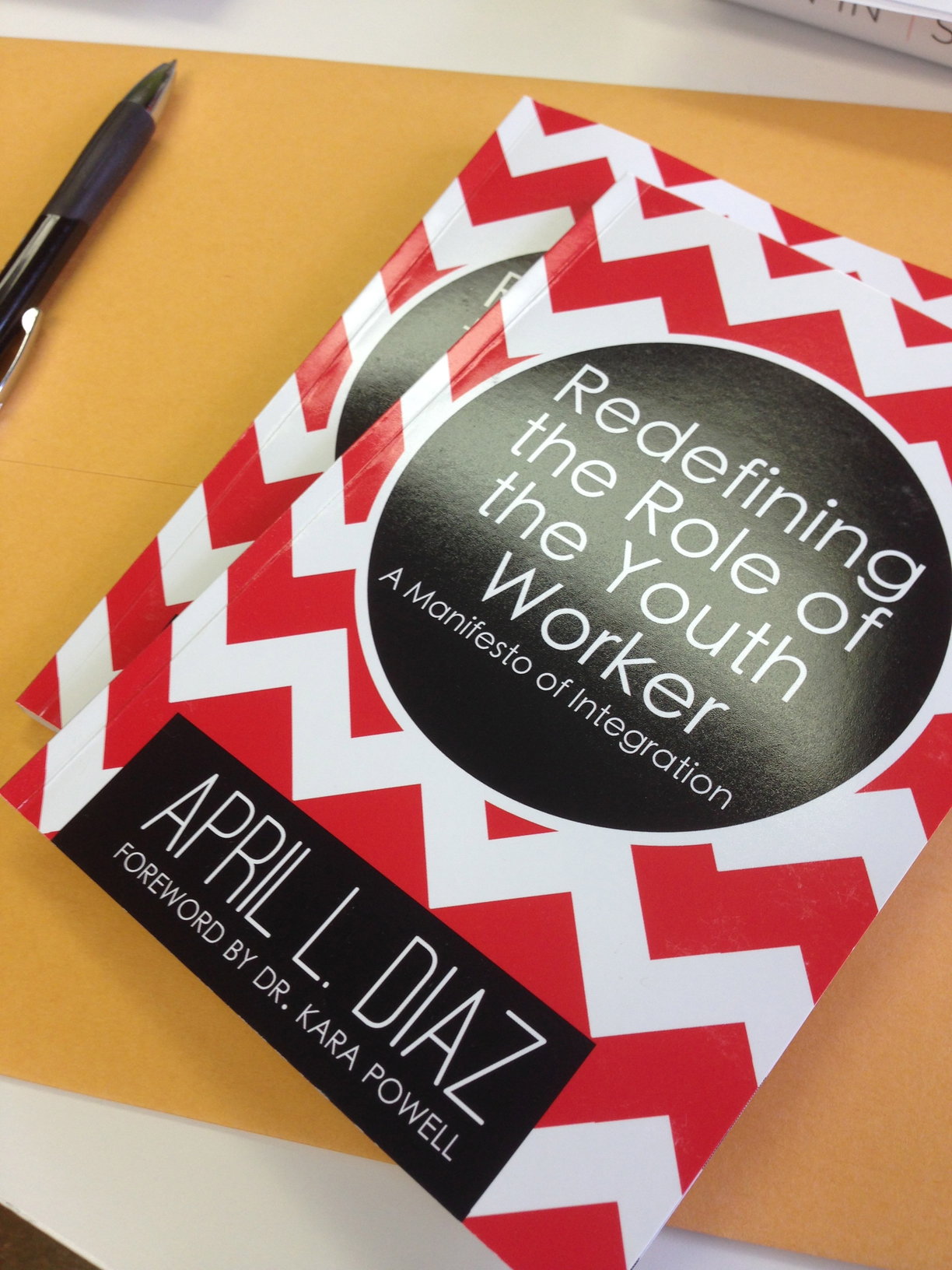A Manifesto of Integration
/This is an excerpt from Chapter 3 of my book, Redefining the Role of the Youth Worker: A Manifesto of Integration. Reprinted with permission via The Youth Cartel.
After nearly 15 years of youth ministry, I simply got tired of getting the same old results from my blood, sweat, and tears. I was tired of seeing the teenagers I’d loved and poured into over the years walk away from Christ and his church after leaving the safety and comfort of their homes and our ministry. For several decades, the church’s approach to youth has more or less looked the same; but student culture, educational systems, and families have changed significantly.
We realized it was time to take another look at our deepest dreams and discern what must change in order for us to realize those dreams.
Redefining the Role
Our journey has been a long one—haphazard at times, seeking how and what this would look like for our community. When we moved from reimagining to redefining the role of the youth worker and youth ministry at our church, we made a dogmatic statement: We were NOT hiring a youth pastor.
A “youth pastor” job title came with very clear expectations of what this person would and would not do. We needed to re-envision our community toward what this person would be responsible for, as well as the church’s vision regarding youth. Who we hired would be just as important as what we held him or her accountable to do (and not do!).
I grew up in a small, über-conservative church. During college, I volunteered at a small charismatic church and a mid-sized Baptist church. My pastoral work has led me to two megachurches in two different parts of the country. I’ve spoken, consulted, and become friends with leaders from a broad spectrum of economic, social, ethnic, and theological perspectives. Now, when I look across the landscape of youth ministry, I see smaller American churches, urban ministries, and the global church actually engaging in the lives of teenagers. And they’re doing so in ways that reflect our redefined youth ministry roles.
Due to a perceived lack of resources, our brothers and sisters in these contexts have been “divinely forced” to utilize the whole community as they train up the “next generation.” I’ve heard the lament as smaller churches or urban ministries long to hire a youth pastor or additional staff to serve teenagers. But I want to commend our co-laborers for their approach. The ways they’re investing in teenagers are precisely what larger churches or megachurches want more of—more care from the whole church, more parental involvement, and a long-term view of faith development. The silos that many churches must tear down in order to bridge the generations simply aren’t a problem in those smaller contexts. They are, in fact, leading the resource-laden ministries in this respect.
One time after I’d finished speaking on this vision, a key leader in Latin America came up and hugged me, and then he whispered in my ear, “This is what the Latin church has been doing for years. You’re right on. Thank you!” We should be thanking you for your faithful service and leadership—especially when you were told you were doing something wrong, that you needed larger crowds, fancier technology, flashier gizmos, or more “fun events” on your calendar.
After the assessment and waiting periods in my local church [described in chapters 1-2] came to a close, we began hammering out the details regarding the kind of key leader we wanted to bring on to our team. Very soon, we determined a job title.
We would hire a Student Integration Pastor.
Philosophical Shifts
In the big picture, the role we envisioned for our Student Integration Pastor was to contribute to and collaborate with the broader church for meaningful, intentional, and mutual ways of integrating teenagers into the life of the church. That’s quite a mouthful.
What do all of those polysyllabic words really mean?
In the beginning, we looked to the unique, God-given fingerprint of our church. As a part of the global church, God has invited our local church to make a unique contribution in the kingdom, and we wanted to remain faithful to that calling. For us, our Purple Cow (Seth Godin’s infamously coined metaphor) was that this person had to be a third-culture person, having the “mindset and will to love, learn, and serve, even in the midst of pain and discomfort.” We were committed to bringing someone onto our team who could adapt to multiple cultures and contexts, work with a wide range of people, and be energized about melding two different cultures together while creating a third culture. We knew this “new way” would be uncomfortable and painful for our church members who were used to a generation of traditional youth ministry and perfectly comfortable with it.
Next, we wanted to go headlong into an intergenerational approach to youth ministry. Since I was an Advisory Council member of Fuller Youth Institute, at that point our church had been digging into the Sticky Faith research for more than five years. We believe in it.
Paul’s words to young Timothy about the relationship between the older and younger generations deeply resonated with us. Paul compels his young disciple, “You have heard me teach things that have been confirmed by many reliable witnesses. Now teach these truths to other trustworthy people who will be able to pass them on to others” (2 Timothy 2:2, NLT.) In other words, a symbolic baton should be passed from mentor to mentee who then, in turn, becomes a mentor for another. Jesus modeled the same powerful approach as he walked with twelve men who became world changers. The power isn’t found in the large crowds; it’s found in the investment that’s being made into a small group of believers who then turn their world upside down!
We dreamed our community would become a place that echoed Paul’s words in 1 Timothy 4:12 (NLT), “Don’t let anyone think less of you because you are young. Be an example to all believers in what you say, in the way you live, in your love, your faith, and your purity.” Our lead pastor, Dave Gibbons, frequently says we are a church for the “next” generation, and our prayerful desire is that the youth will lead the church in many ways—in worship, prayer, evangelism, and care for the poor. These two scriptures highlighted our vision for the student integration pastor.
We put a stake in the ground by saying that mutual, intentional, and meaningful togetherness would be a distinguishing quality of our church. Yes, teenagers need age-appropriate gatherings and equipping, but this approach should be the exception, not the rule in terms of our thinking and calendar plans. We believe in using an age-appropriate version of the broader church vision and practical experience to help our teenagers make the transition into the whole church post-graduation.
If the youth ministry’s vision and practical experience are completely different from that of the whole church, then we’re essentially giving our teenagers a bait-and-switch. No wonder they don’t know how to choose a church, connect in the adult community, or translate their youth group experience once they exit our youth ministry bubble.
Along those lines, we determined that our student integration pastor would be collaborative and big-picture. In all things, our youth ministry would look at ways the entire church was growing and developing, and then consider how that growth might intersect with our teenagers. Beyond collaboration between the youth ministry and the whole church, we must take a closer look at the families within the church as well. Every family has something to offer. We would look for those strengths, call them out, and invite our families to help us develop our teenagers. Far too often and for too long, the students’ immediate families and their spiritual family have been downplayed in our efforts to create safe youth ministry havens for teenagers. We believe it takes a village to raise a child, and that village needs to be much larger than a siloed youth ministry.
We also identified that our Student Integration Pastor needed to be highly relational, not programmatic and segmented. In many churches, a disproportionate percentage of the youth pastor’s time is invested into creating programs, not walking with people. What if we turned that ratio upside down?
I’ll never forget the staff meeting where our lead pastor challenged us to get out of the office and spend more time with our people. He said we weren’t getting paid to build programs and sit in our offices. And then he charged us to spend twenty hours or more of our work week with people. I remember shaking my head. That’s impossible, I thought. It was impossible within the constructs I had built.
In the years since that meeting, we’ve managed to turn things around. Now our team spends a great percentage of their time investing in people over programs. We are held accountable for walking with a few for maximum impact.
The last primary characteristic of the Student Integration Pastor is that he or she should be a champion for teenagers. This person would be the lead banner-waver reminding our church of their responsibility of spiritually forming teenagers. He or she would educate, cast vision, and inspire the people in our community, making sure they know not only how incredible teenagers are, but also what they need to develop a lifelong faith. This leader would give voice and hope to a generation in need of both.
Beyond Student Integration Pastor
Yes, we took great pains to evaluate the old and redefine the new role of our point leader. Yet by the very nature of the position, it was clear this transformation went way beyond a pastoral role. These changes would impact, infiltrate, and influence every person within our community. We weren’t simply scoping out a new reality for the point leader; we were reimagining every person’s role. This implicates a necessary role change for everyone in the body of Christ.
The road to change has been anything but easy. But day by day, year by year, we are seeing this new vision come to life in our congregation.
Questions to Consider
- What about the idea of “redefining the youth worker role” resonates with you?
- What are some of the unique characteristics about your context that will frame your conversation prior to any changes?
- Specifically, what values or characteristics of youth ministry might need to be redefined in your context?
- Where are these desirable characteristics already at work in your church?
- Who else needs to be part of this conversation?
If you'd like to explore how I could come alongside your community through seminars, teaching, or coaching, please connect with me HERE.








